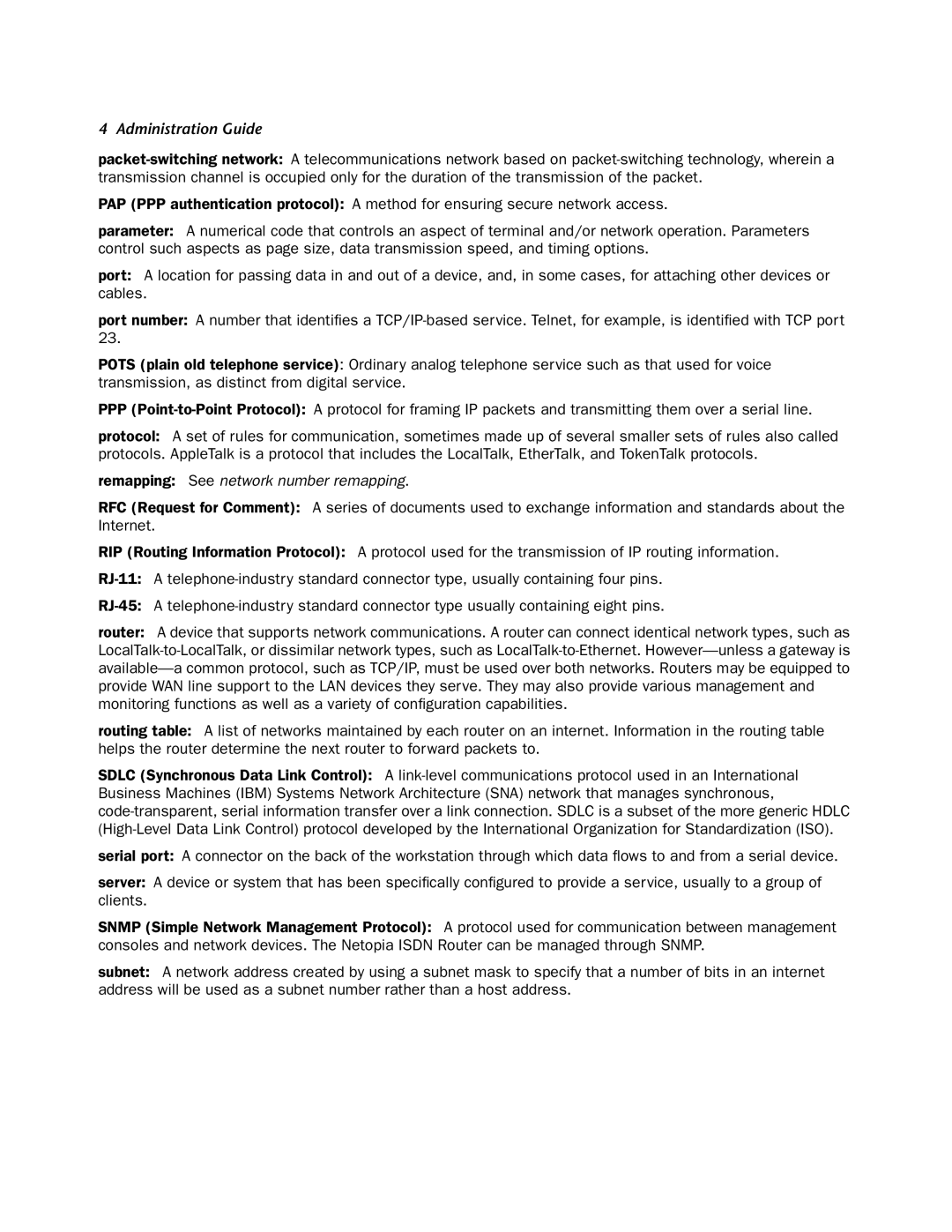4 Administration Guide
PAP (PPP authentication protocol): A method for ensuring secure network access.
parameter: A numerical code that controls an aspect of terminal and/or network operation. Parameters control such aspects as page size, data transmission speed, and timing options.
port: A location for passing data in and out of a device, and, in some cases, for attaching other devices or cables.
port number: A number that identifies a
POTS (plain old telephone service): Ordinary analog telephone service such as that used for voice transmission, as distinct from digital service.
PPP
protocol: A set of rules for communication, sometimes made up of several smaller sets of rules also called protocols. AppleTalk is a protocol that includes the LocalTalk, EtherTalk, and TokenTalk protocols.
remapping: See network number remapping.
RFC (Request for Comment): A series of documents used to exchange information and standards about the Internet.
RIP (Routing Information Protocol): A protocol used for the transmission of IP routing information.
router: A device that supports network communications. A router can connect identical network types, such as
routing table: A list of networks maintained by each router on an internet. Information in the routing table helps the router determine the next router to forward packets to.
SDLC (Synchronous Data Link Control): A
serial port: A connector on the back of the workstation through which data flows to and from a serial device.
server: A device or system that has been specifically configured to provide a service, usually to a group of clients.
SNMP (Simple Network Management Protocol): A protocol used for communication between management consoles and network devices. The Netopia ISDN Router can be managed through SNMP.
subnet: A network address created by using a subnet mask to specify that a number of bits in an internet address will be used as a subnet number rather than a host address.
